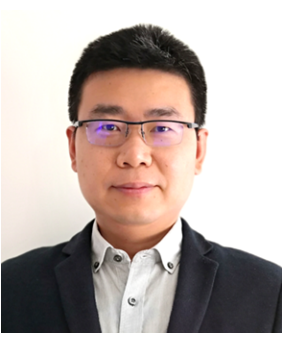Dr. Jinkai Yuan
CNRS, Sorbonne Université, France.  Bio. Jinkai Yuan earned his Ph.D. in Materials Science from MSSMat CNRS UMR 8579, Ecole Centrale Paris, in 2012, followed by a Habilitation à Diriger des Recherches (HDR) in Polymers from the University of Bordeaux in 2022. Since November 2023, he has worked at LCMCP-CNRS, Sorbonne University. Prior to his current position, he held roles as a CNRS Researcher at CRPP-CNRS, University of Bordeaux from 2016 to 2023. His research focuses on the conception, formulation, characterizations, and applications of multifunctional polymer composites, encompassing energy storage and harvesting, printed electronics, sensors, and soft robotics.
Bio. Jinkai Yuan earned his Ph.D. in Materials Science from MSSMat CNRS UMR 8579, Ecole Centrale Paris, in 2012, followed by a Habilitation à Diriger des Recherches (HDR) in Polymers from the University of Bordeaux in 2022. Since November 2023, he has worked at LCMCP-CNRS, Sorbonne University. Prior to his current position, he held roles as a CNRS Researcher at CRPP-CNRS, University of Bordeaux from 2016 to 2023. His research focuses on the conception, formulation, characterizations, and applications of multifunctional polymer composites, encompassing energy storage and harvesting, printed electronics, sensors, and soft robotics.
 Activity. Dr. Jinkai YUAN’s research activities focus on multifunctional composite materials for applications of actuators, sensors, mechanical energy harvesters, and energy storage capacitors. His work relies on the new composite structures and new processing to achieve ever-record properties and to solve problematic issues arising from the energy-related sectors. First, to meet the needs of high-energy miniature engines that are indispensable in microrobotics and miniaturized medical devices, he invented a twisted shape memory nanocomposite fiber by building superstructures of graphene flakes into polyvinyl alcohol (a). Such a unique composite structure is found to largely expand the ability of polymer fibers to store/release torsional mechanical energy, thus giving rise to strong microengines in terms of energy density. Furthermore, to power microelectronics wirelessly and more sustainably, he developed a highly efficient mechanical energy harvester based on the giant electrostriction of soft elastomeric composites (b). The record electrostriction was achieved by controlling the interference of liquid crystal phase transition with percolation transition of graphene flakes in soft elastomers. Lastly, his recent efforts are to develop waterborne dielectric composites for capacitive energy storage, by using bioresourced polymers (e.g.cellulose) or aqueous colloidal solutions as new starting materials (c) and microfabrications as new processing techniques (d). This eventually allows for addressing the challenges of integrating sustainable energy into the grid as well as the rising integration and ever-growing miniaturization of power electronics. During the development of these research projects, he has accumulated rich expertise in colloidal engineering, physical chemistry of liquid crystals, microfabrication, and (di)electic characterizations and properties.
Activity. Dr. Jinkai YUAN’s research activities focus on multifunctional composite materials for applications of actuators, sensors, mechanical energy harvesters, and energy storage capacitors. His work relies on the new composite structures and new processing to achieve ever-record properties and to solve problematic issues arising from the energy-related sectors. First, to meet the needs of high-energy miniature engines that are indispensable in microrobotics and miniaturized medical devices, he invented a twisted shape memory nanocomposite fiber by building superstructures of graphene flakes into polyvinyl alcohol (a). Such a unique composite structure is found to largely expand the ability of polymer fibers to store/release torsional mechanical energy, thus giving rise to strong microengines in terms of energy density. Furthermore, to power microelectronics wirelessly and more sustainably, he developed a highly efficient mechanical energy harvester based on the giant electrostriction of soft elastomeric composites (b). The record electrostriction was achieved by controlling the interference of liquid crystal phase transition with percolation transition of graphene flakes in soft elastomers. Lastly, his recent efforts are to develop waterborne dielectric composites for capacitive energy storage, by using bioresourced polymers (e.g.cellulose) or aqueous colloidal solutions as new starting materials (c) and microfabrications as new processing techniques (d). This eventually allows for addressing the challenges of integrating sustainable energy into the grid as well as the rising integration and ever-growing miniaturization of power electronics. During the development of these research projects, he has accumulated rich expertise in colloidal engineering, physical chemistry of liquid crystals, microfabrication, and (di)electic characterizations and properties.
On the Figure above: a) Twisted shape memory composite fibers; b) Graphene liquid crystal doped soft materials with giant electrostrictive; c) Polyelectrolyte-colloid complexes as building blocks to construct dielectric composites; d) Inkjet printing of all aqueous inks to flexible microcapacitors.
